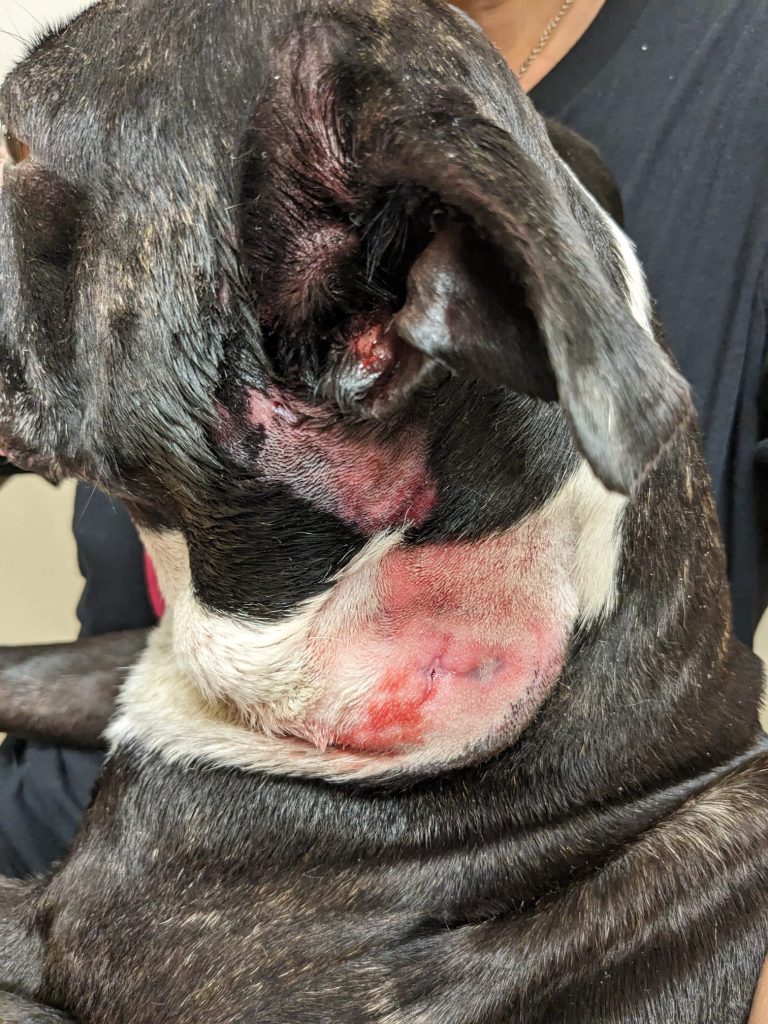Navigating Cat Allergies: A Guide for Feline Enthusiasts
Embracing the companionship of a cat is a joyous experience, but for some, it comes with a unique challenge: allergies. Cat allergies affect a significant portion of the population, yet they need not be a barrier to enjoying the company of these furry friends. In this article, we’ll delve into the world of cat allergies, providing essential information and practical tips for those who adore cats but find themselves susceptible to allergic reactions.
Understanding Cat allergies
Cat allergies, also known as feline allergy or allergic rhinitis triggered by cats, arise from an intricate interplay between the immune system and specific proteins present in a cat’s biological secretions. These allergenic proteins are primarily concentrated within the skin cells, urine, and saliva of felines.

The predominant culprits in cat allergies are glycoproteins known as Fel d 1 and Fel d 4. Fel d 1 is predominantly secreted through the skin, while Fel d 4 is found in cat saliva. These proteins, owing to their minuscule size, are readily airborne and can be inhaled, or they can become deposited onto surfaces, subsequently making them accessible for skin contact.
When an individual with a predisposition to cat allergies encounters these allergenic proteins, their immune system perceives them as foreign invaders. This prompts the activation of specific immune cells, particularly mast cells and basophils. These cells possess receptors, known as IgE antibodies, which specifically recognize and bind to the allergenic proteins.
Upon subsequent exposures to the same allergenic proteins, these IgE antibodies trigger the mast cells and basophils to release a cascade of bioactive substances, with histamine being the most prominent. Histamine, in turn, instigates various physiological responses, giving rise to the characteristic symptoms of cat allergies.
The allergic response to these proteins can manifest in diverse ways. Respiratory symptoms include sneezing, nasal congestion, and in severe cases, wheezing or coughing. Ocular symptoms may encompass itchy or watery eyes, along with conjunctival redness. Additionally, contact with allergenic proteins can lead to skin manifestations, ranging from mild erythema to more pronounced dermatitis or urticaria.
It is noteworthy that cat allergies can develop over time, even in individuals who have previously been in close proximity to cats without exhibiting allergic reactions. This phenomenon, termed “allergic sensitization,” arises from a complex interplay of genetic predispositions and environmental factors. Prolonged exposure to high levels of allergenic proteins, particularly during early childhood, can potentiate the likelihood of developing allergic reactions.
Identifying Cat Allergy Symptoms
Recognizing the signs of cat allergies is pivotal in initiating effective management strategies. These symptoms can manifest in various ways, often mimicking those of other respiratory conditions. Here’s an in-depth exploration of the common indicators:
1. Sneezing: Sneezing is a prominent manifestation of cat allergies and arises as a result of the body’s attempt to expel the inhaled allergenic proteins. It occurs due to the release of histamines, triggering a reflexive expulsion of air through the nasal passages.
2. Runny or Stuffy Nose: Allergenic proteins from cats can prompt an inflammatory response within the nasal mucosa. This leads to increased production of mucus, resulting in a runny nose. Conversely, congestion occurs due to swollen nasal passages and increased mucus production.
3. Itchy or Watery Eyes: When allergenic proteins come into contact with the eyes, they can stimulate the release of histamines, causing itchiness and excessive tearing. This can be particularly bothersome and is a hallmark symptom of cat allergies.
4. Skin Rashes or Hives: In some cases, direct contact with allergenic proteins, especially through petting or handling a cat, can lead to skin reactions. This may range from mild erythema to more pronounced hives or dermatitis.
5. Wheezing or Coughing: Inhaled allergens can also induce irritation within the lower respiratory tract. This irritation can result in wheezing, a high-pitched whistling sound during breathing, or coughing, which serves as a reflexive attempt to clear the airways.
6. Difficulty Breathing: In severe cases, especially in individuals with a heightened sensitivity to cat allergens, exposure can lead to significant respiratory distress. This may manifest as difficulty in breathing, a sensation of chest tightness, or rapid and shallow breathing.
7. Exacerbation of Asthma: For individuals with pre-existing asthma, cat allergens can exacerbate their condition. It can lead to increased frequency and severity of asthma attacks, with symptoms such as chest tightness, shortness of breath, and increased use of inhalers.
8. Postnasal Drip: Excessive mucus production can result in postnasal drip, wherein mucus drips down the back of the throat. This can lead to irritation and a persistent cough.
It is crucial to note that the severity of these symptoms can vary widely among individuals, and some may experience a combination of these indicators. Additionally, prompt recognition of these symptoms enables individuals to take proactive steps towards managing their cat allergies effectively. This may include allergen avoidance strategies, medical interventions, and lifestyle modifications, all of which contribute to an improved quality of life for those affected by cat allergies.
Managing Cat Allergies: Practical Tips
Managing cat allergies requires a multi-faceted approach, and it starts with designating specific areas of your home as allergy-free zones. Consider beginning with your bedroom, where you spend a significant amount of time. This controlled environment provides a sanctuary free from allergenic proteins that can exacerbate your symptoms.
Frequent grooming of your cat plays a crucial role in reducing allergen levels in their fur. Opt for hypoallergenic shampoos, which are specially formulated to minimize the presence of allergenic proteins. This simple yet effective measure can significantly contribute to a reduction in allergen exposure.
Investing in high-quality air filters is a proactive step in creating an allergen-reduced living space. Opt for HEPA filters in your home’s ventilation system, as they are designed to trap even the tiniest particles, including allergenic proteins. Additionally, consider using air purifiers in key areas to further enhance air quality.
After interacting with your cat, make it a habit to wash your hands and change your clothes promptly. This minimizes the potential transfer of allergens from your hands and clothing to your skin or other surfaces. By adopting this practice, you can effectively reduce direct contact with allergenic proteins.
Regular vacuuming and dusting are essential in controlling allergen buildup. Utilize a vacuum cleaner equipped with a HEPA filter to efficiently capture and contain allergenic particles. Dusting surfaces, including floors, shelves, and furniture, further mitigates allergen accumulation, creating a cleaner and safer environment.
Incorporate allergen-reducing products into your living space. Bedding covers designed to reduce allergen exposure can be particularly beneficial, especially in the bedroom. Additionally, consider using air purifiers strategically placed in areas where you spend a significant amount of time. These products act as supplementary measures in minimizing allergenic proteins.
Consulting with an allergist provides invaluable insights and personalized strategies for managing cat allergies. An allergist can conduct specific tests to identify the precise allergens triggering your reactions. With this knowledge, they can offer tailored advice and recommend targeted interventions to effectively alleviate your symptoms.
For individuals particularly sensitive to cat allergens, considering hypoallergenic cat breeds can be a game-changer. Breeds such as the Siberian or Balinese produce fewer allergenic proteins, making them potentially better tolerated by allergic individuals. This thoughtful choice in pet selection can significantly contribute to a more harmonious living environment.
Exploring immunotherapy is a long-term solution for managing cat allergies. This involves the administration of allergy shots or drops under medical supervision. Over time, this treatment helps desensitize your body to specific allergens, ultimately reducing your allergic response. It’s a proactive step towards building tolerance and minimizing allergic reactions.
Lastly, remember that managing cat allergies is a journey that requires patience and persistence. It may take time to find the combination of strategies that works best for you. By implementing these practical tips and remaining dedicated to your allergy management plan, you can create a comfortable and thriving environment for both you and your beloved feline companion.
Remember, having cat allergies doesn’t mean you have to forego the joy of feline companionship. By taking proactive steps and implementing these practical tips, you can create a harmonious environment where both you and your beloved cat can thrive together. With dedication and care, cat lovers can enjoy the enriching bond that comes with sharing their lives with these wonderful creatures.






